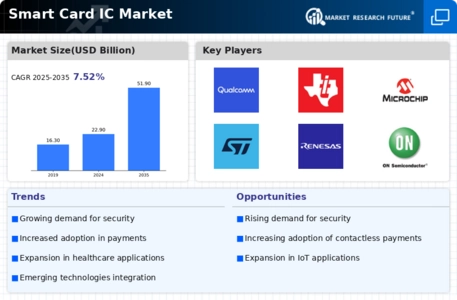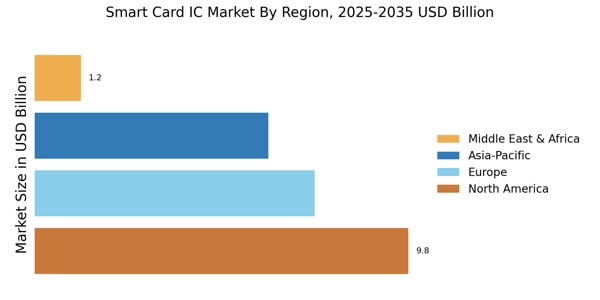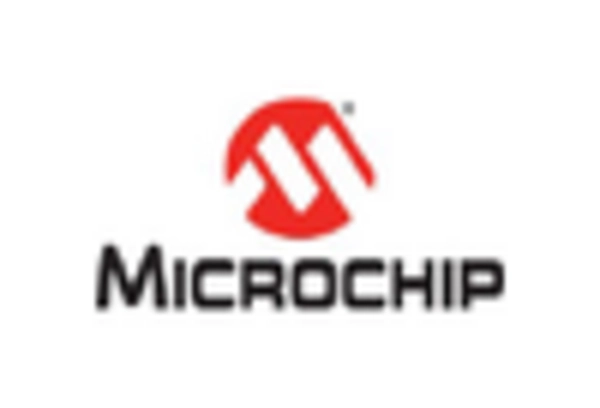Technological Advancements in Smart Card ICs
The Smart Card IC Market is significantly influenced by rapid technological advancements. Innovations in semiconductor technology have led to the development of more efficient and powerful smart card integrated circuits. These advancements enable the incorporation of features such as multi-application capabilities and enhanced processing power. As of 2025, the market is expected to witness a shift towards more sophisticated smart card solutions, including those that support Internet of Things (IoT) applications. This evolution not only broadens the scope of smart card functionalities but also attracts a diverse range of industries, from telecommunications to transportation, thereby expanding the Smart Card IC Market.
Increasing Adoption of Digital Payment Solutions
The Smart Card IC Market is experiencing a notable surge due to the increasing adoption of digital payment solutions. As consumers and businesses alike gravitate towards cashless transactions, the demand for smart cards equipped with integrated circuits is on the rise. In 2025, it is estimated that the digital payment sector will reach a valuation of over 10 trillion dollars, further propelling the Smart Card IC Market. This trend is particularly evident in sectors such as retail and e-commerce, where the convenience and security offered by smart cards are highly valued. The integration of advanced technologies, such as Near Field Communication (NFC), enhances the functionality of these cards, making them indispensable in modern financial transactions.
Regulatory Support for Smart Card Implementation
Regulatory frameworks are playing a crucial role in shaping the Smart Card IC Market. Governments across various regions are implementing policies that encourage the adoption of smart card technology, particularly in sectors such as transportation and healthcare. For instance, initiatives aimed at digitizing public services and enhancing security protocols are driving the demand for smart card solutions. By 2025, it is anticipated that regulatory support will lead to a significant increase in smart card deployments, particularly in emerging economies. This regulatory push not only fosters innovation but also creates a conducive environment for the growth of the Smart Card IC Market.
Growing Emphasis on Security and Fraud Prevention
Security concerns continue to be a primary driver for the Smart Card IC Market. With the increasing incidence of data breaches and identity theft, organizations are prioritizing secure payment methods. Smart cards, which utilize advanced encryption and authentication protocols, are becoming a preferred choice for both consumers and businesses. The market for smart card ICs is projected to grow at a compound annual growth rate of approximately 8% through 2025, driven by the need for enhanced security measures. Financial institutions, government agencies, and healthcare providers are particularly focused on implementing smart card solutions to safeguard sensitive information, thereby reinforcing the demand for smart card integrated circuits.
Rising Demand for Identity Verification Solutions
The Smart Card IC Market is witnessing a rising demand for identity verification solutions, driven by the need for secure access control and authentication. As organizations seek to enhance their security measures, smart cards equipped with integrated circuits are increasingly utilized for identity verification purposes. This trend is particularly pronounced in sectors such as government, finance, and healthcare, where secure access to sensitive information is paramount. The market for identity verification solutions is projected to grow significantly, with smart card technology playing a pivotal role. By 2025, the Smart Card IC Market is expected to benefit from this trend, as more organizations adopt smart card solutions to streamline their identity verification processes.

















Leave a Comment